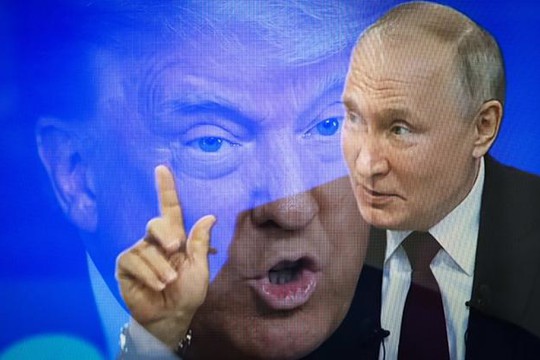Photo: publics
It’s a time for choosing in the Russia-Ukraine war.
President Donald Trump’s decision to considerably shorten his 50-day deadline for Russia to agree to an unconditional ceasefire with Ukraine reflects his mounting frustration with what has proven to be a difficult peace process, ‘The Responsible Statecraft’ writes.
The President acknowledged on Monday this move is unlikely to shift Russia's position. “If you know what the answer is going to be, why wait?” he said.
As the White House ponders next steps, it’s worth reflecting on the geopolitical moment President Trump finds himself in. It was only eight months ago that any talk of a viable diplomatic settlement was traduced by the previous administration as a naive, shortsighted capitulation to autocracy.
The Trump administration deserves no shortage of credit for lifting the three-year blockade on dialogue with Russia, a grave mistake by Western leaders that has exacerbated the diplomatic logjam Ukraine is now in.
Direct high-level channels between Russia and the U.S. were restored almost immediately upon Trump’s assumption of the presidency. Months of dialogue between Trump and his Russian counterpart, Vladimir Putin, as well as the relentless diplomatic efforts of special envoy Steve Witkoff, have de-escalated bilateral U.S.-Russia tensions and generated a clearer, even if ungenerous, picture of Russia’s framework for a peace settlement.
To be sure, Trump is fully justified in taking the view that this crisis was compounded and badly mishandled by actors he has nothing to do with, including, as it were, some of the loudest promoters of the false Russiagate narratives that derailed his first term and left a malign imprint on U.S. national security discourse.
This crisis was foisted on Trump by forces outside his control, but it is nevertheless his to resolve, and the choices made by the White House in coming weeks will augur fateful results not just for the Ukraine peace process but for the administration’s ability to deliver on its larger foreign policy vision. There cannot be a sustainable reprioritization of U.S. resources away from Europe to the Indo-Pacific while this war roils on, nor if it ends with a volatile Europe teetering on the brink of direct confrontation with Russia.
It should be recognized as part of any diplomatic point of departure that Russia will never agree to an unconditional 30-day ceasefire. Imposing deadlines in service of this goal, regardless of length, does nothing to assuage the underlying logic that Russia will never surrender its principal source of leverage – namely, its military advantage and escalation dominance over Ukraine – without substantial concessions from Kyiv and the West. There is little the U.S. can offer, in terms of affecting the bilateral military dynamics between Russia and Ukraine, that Russia cannot take by force if the war continues into 2026.
The only way out is through sustained, creative diplomacy that takes into account the full scope of challenges and opportunities in U.S.-Russia relations. The stakes extend well beyond Ukraine; President Trump has a window to not just put an end to the carnage and tragedy wrought by this war, but to do so while advancing American strategic interests in a way not seen since Richard Nixon’s opening to China. But to seize this opportunity, the White House must treat the Ukraine war as the complex, multilayered problem that it is.
The Trump administration should outline concrete steps to restore U.S.-Russia commercial ties and reintegrate Russia into Western-led financial institutions as part of a package deal premised on Russia’s willingness to soften its territorial claims. The White House should likewise make clear that a negotiated settlement in Ukraine would generate the goodwill and confidence-building mechanisms necessary for constructive dialogue on arms control and NATO’s force posture in Eastern Europe, both questions of acute concern to the Kremlin.
In short, the key to a successful negotiating posture on Ukraine is to refocus the talks away from immediate deconfliction to underlying strategic issues that both Moscow and Washington have vested interests in addressing. This can only be accomplished by accepting and consistently acting on the reality that the main sources of American leverage are to be found off the battlefield. No one said this would be easy, but the costs of inaction – both for Ukraine and U.S. global interests – are far higher.
read more in our Telegram-channel https://t.me/The_International_Affairs

 9:55 02.08.2025 •
9:55 02.08.2025 •























